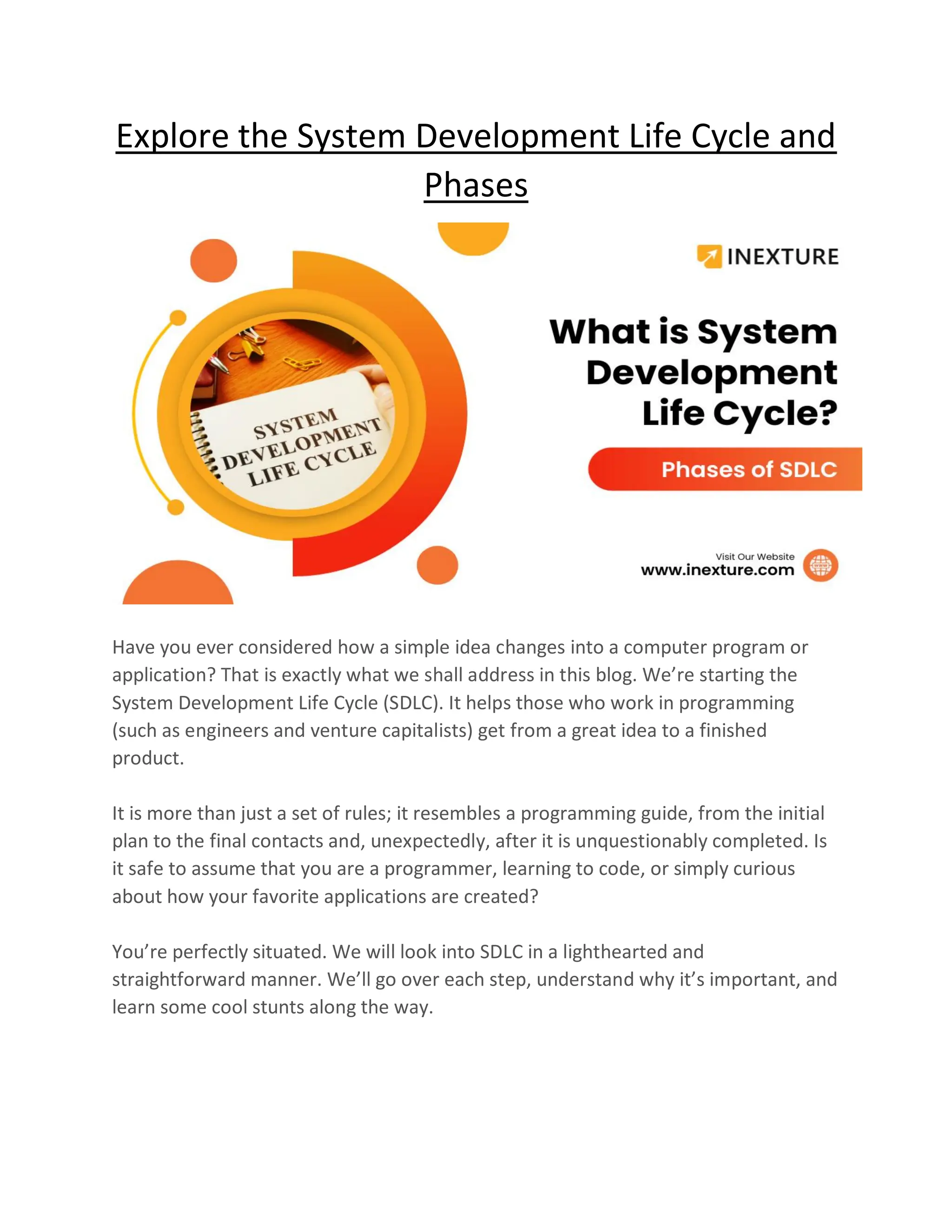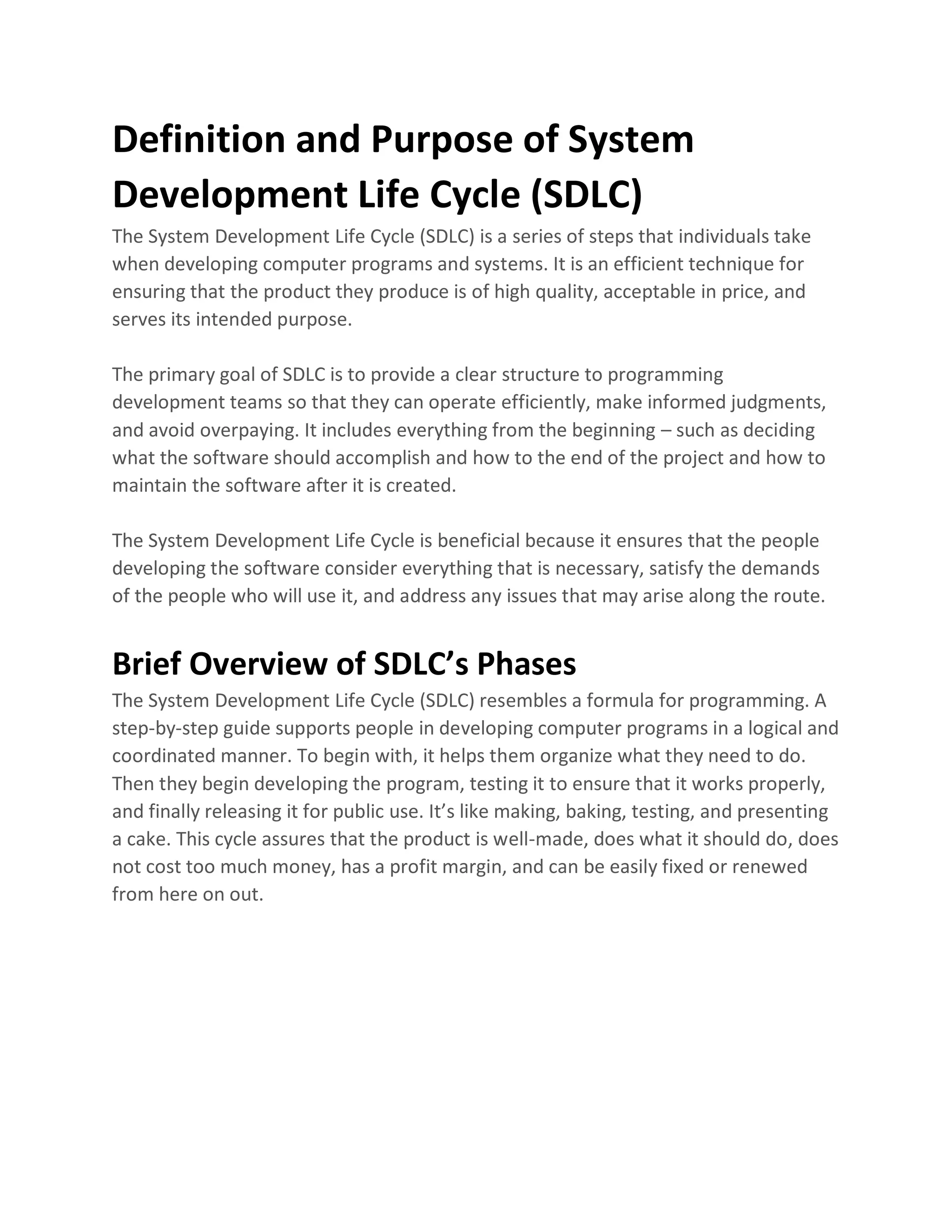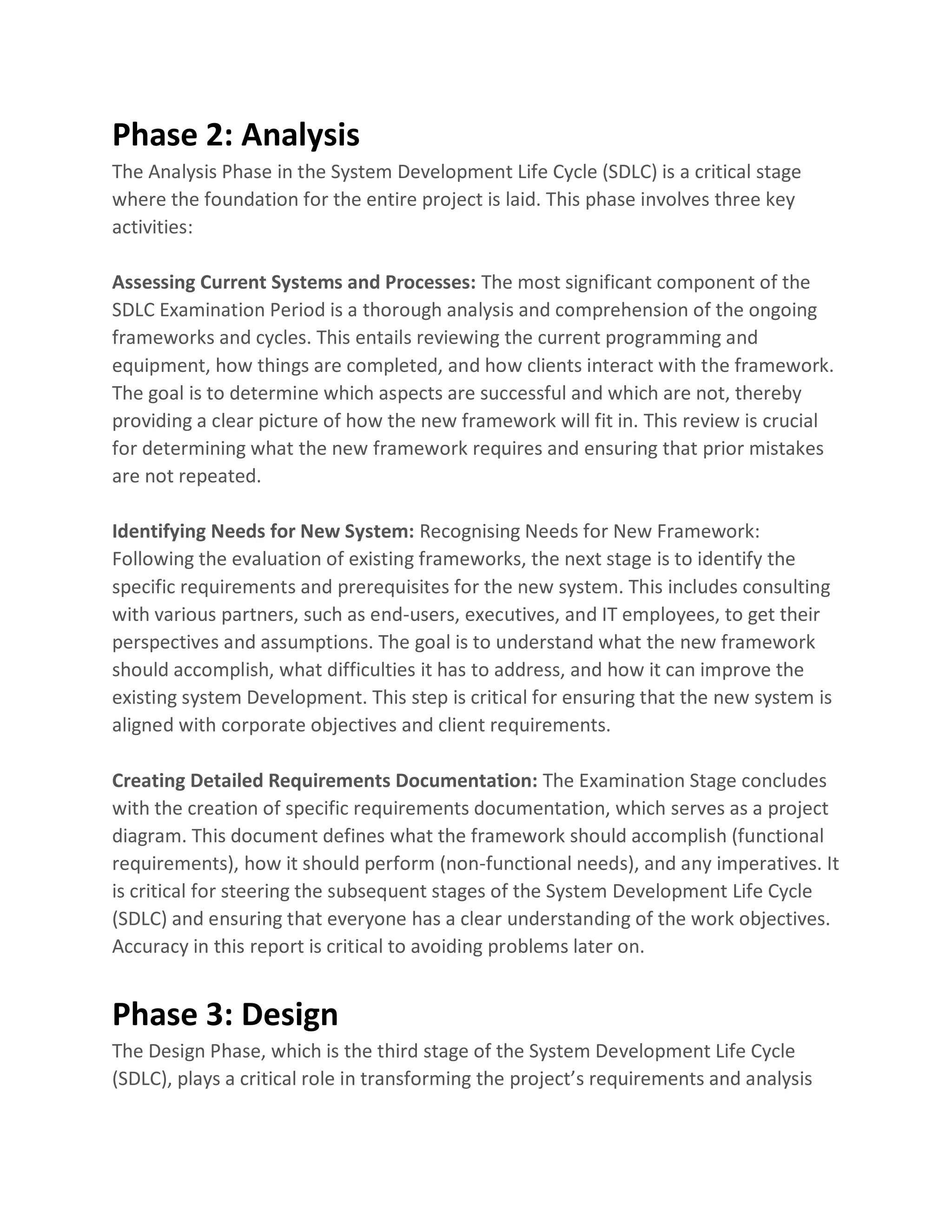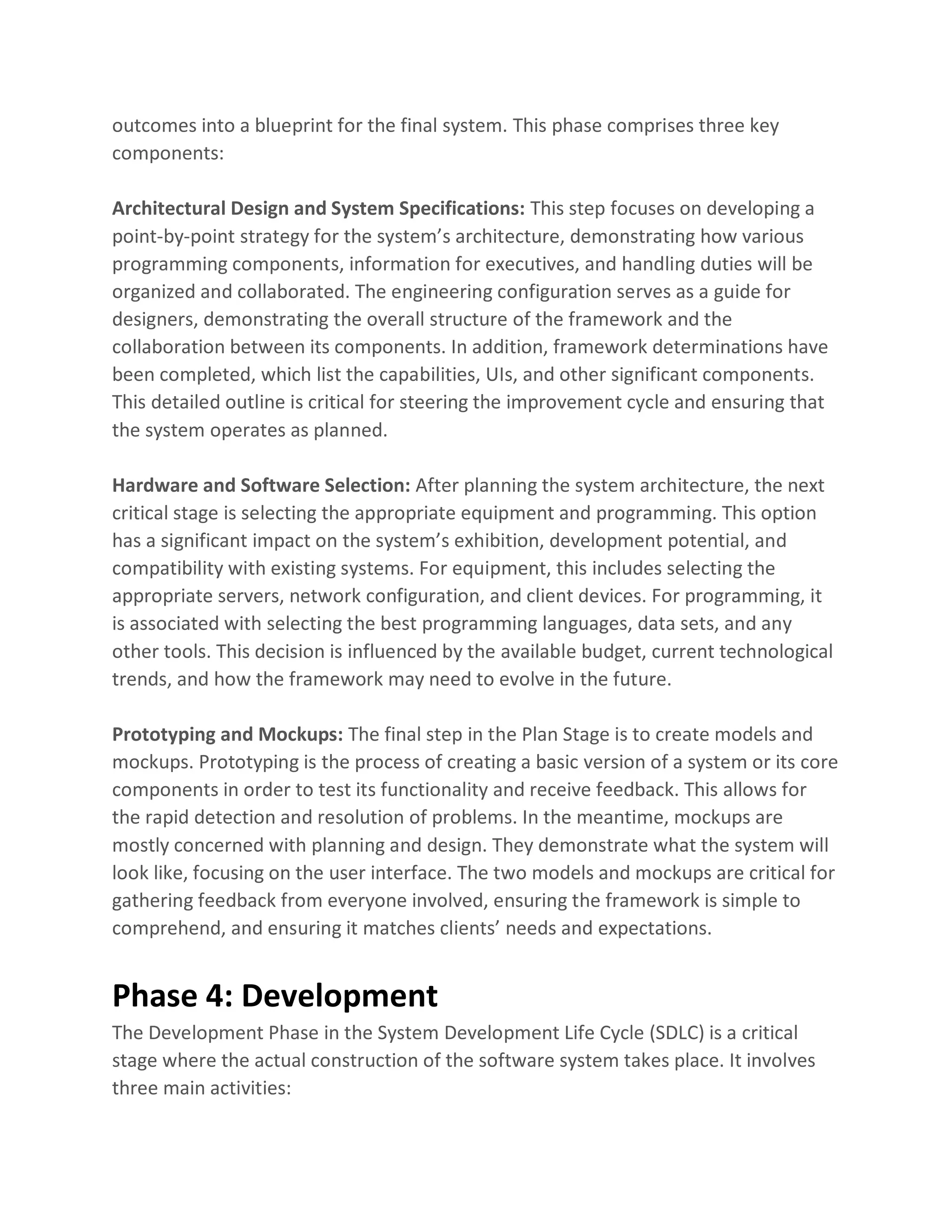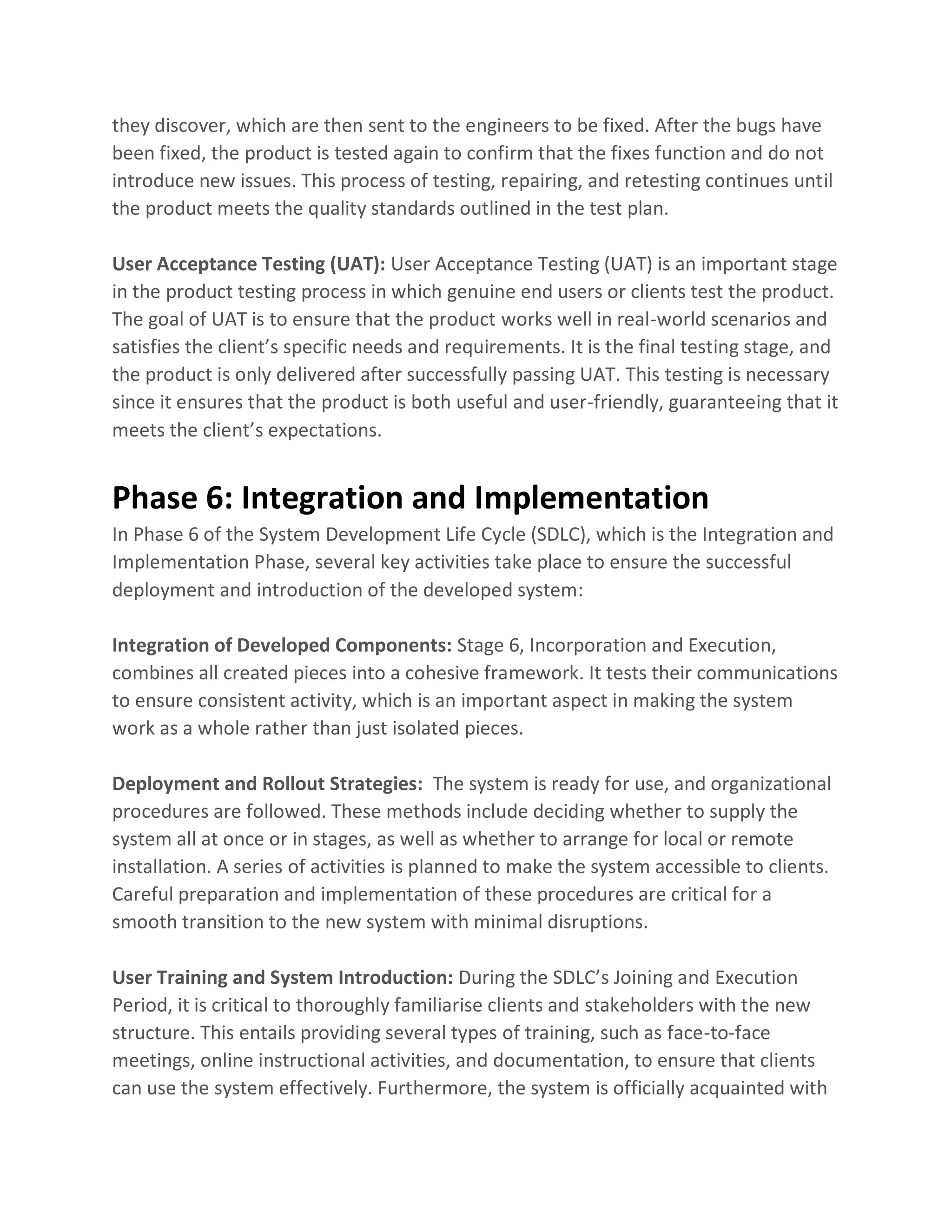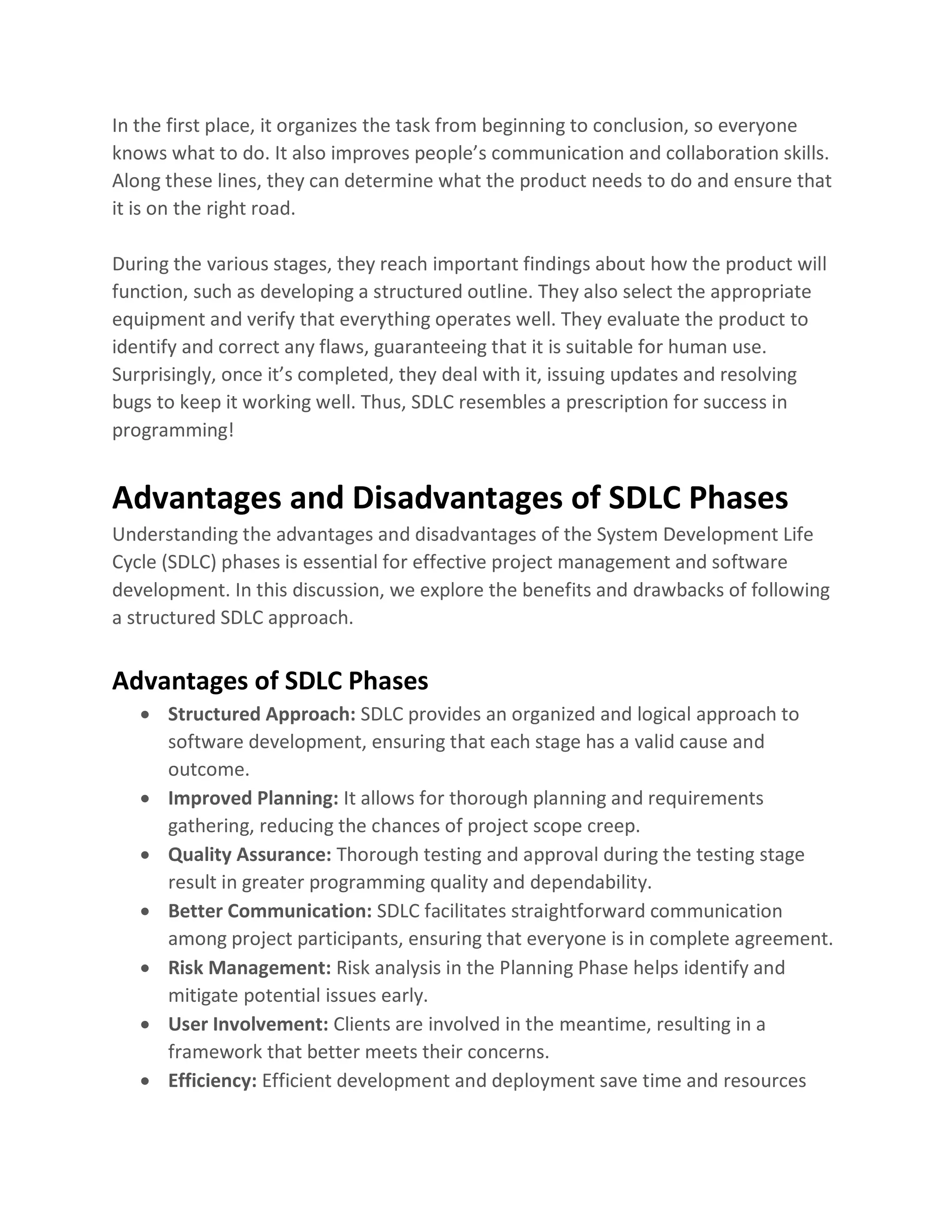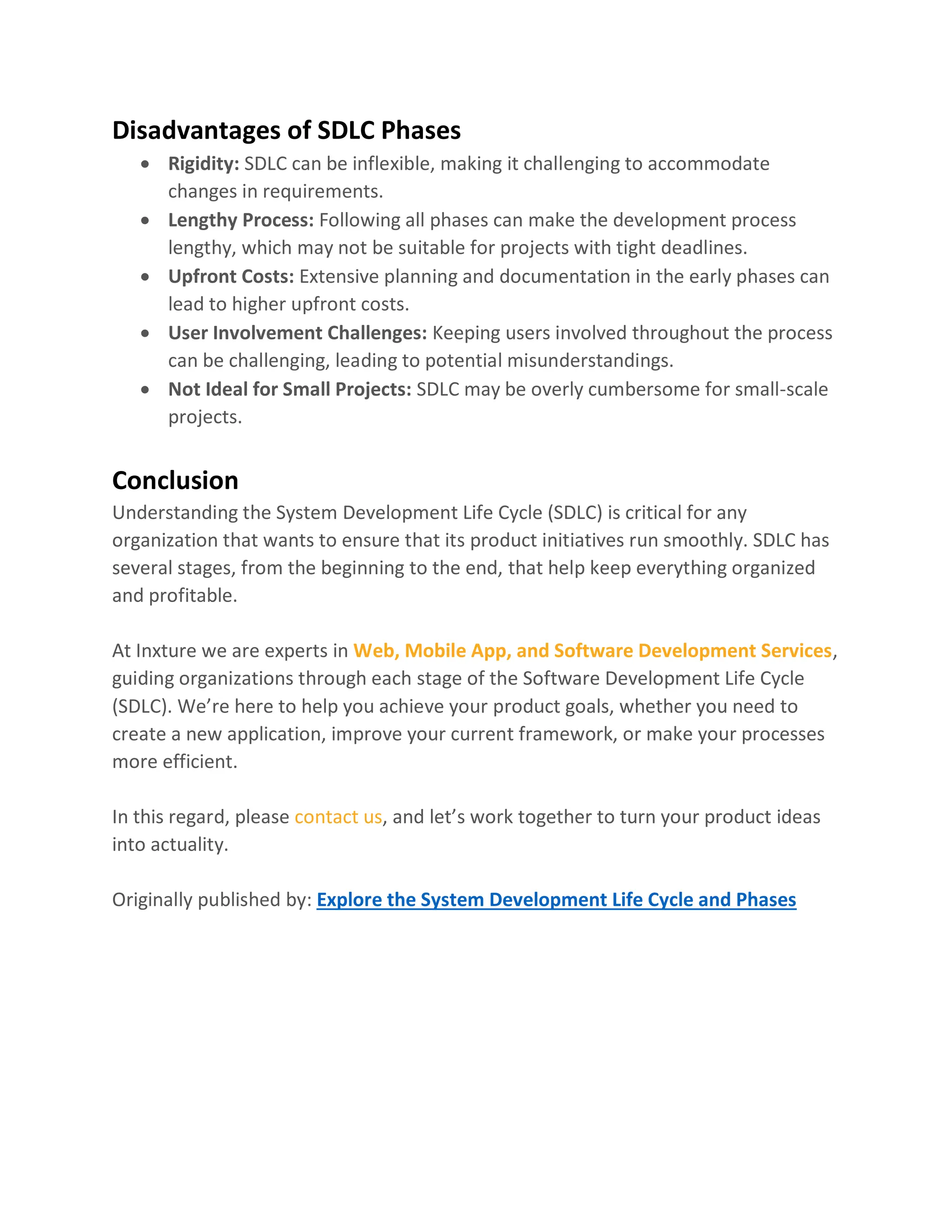The document discusses the System Development Life Cycle (SDLC), which is a structured approach that guides programmers from the inception of an idea to the delivery and maintenance of a software product. It outlines the seven phases of the SDLC: planning, analysis, design, development, testing, integration and implementation, and maintenance, highlighting the importance of each phase for ensuring the quality and functionality of the final product. The document also reviews the advantages and disadvantages of following the SDLC framework, emphasizing its role in enhancing project management and software development effectiveness.
